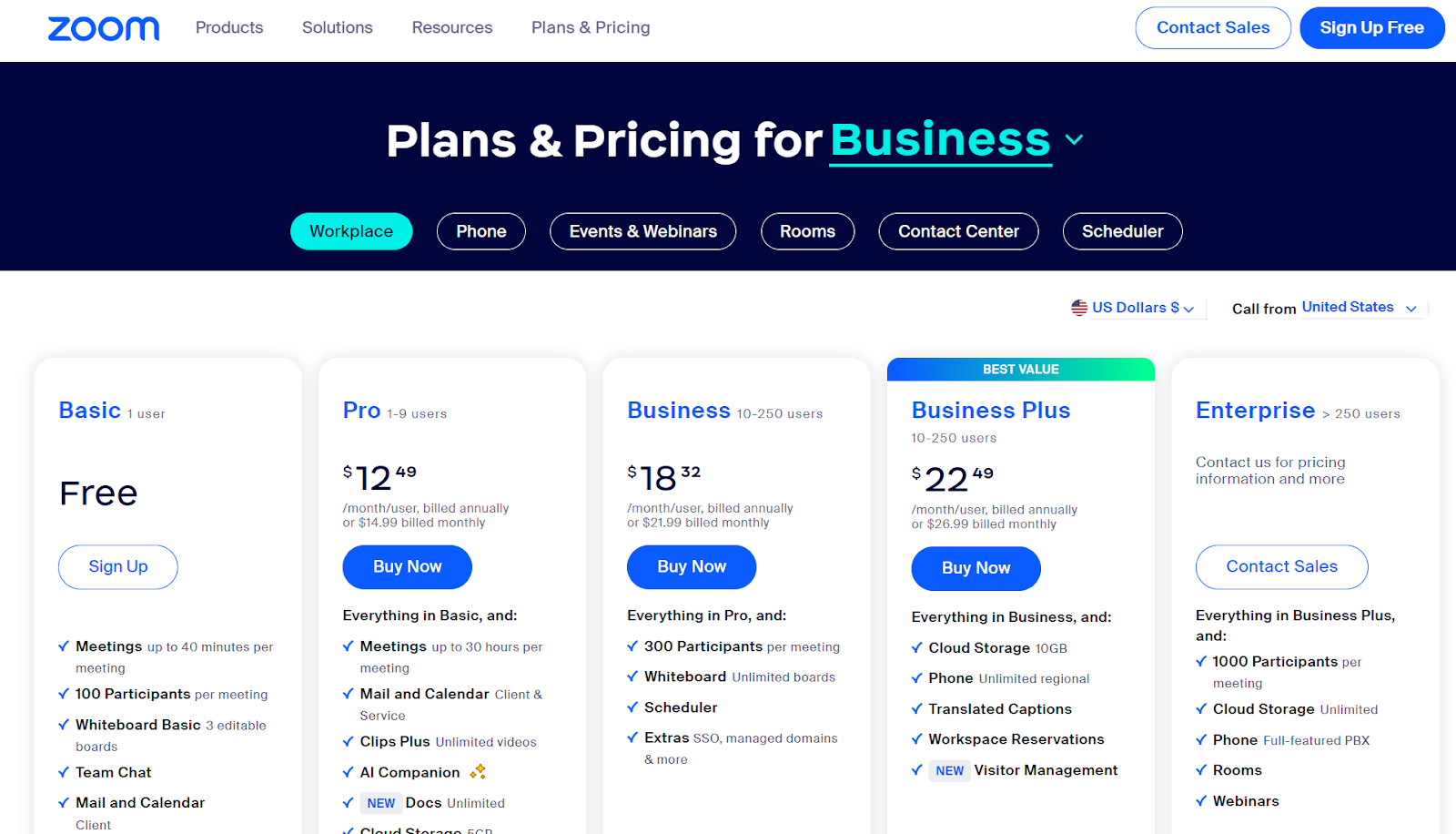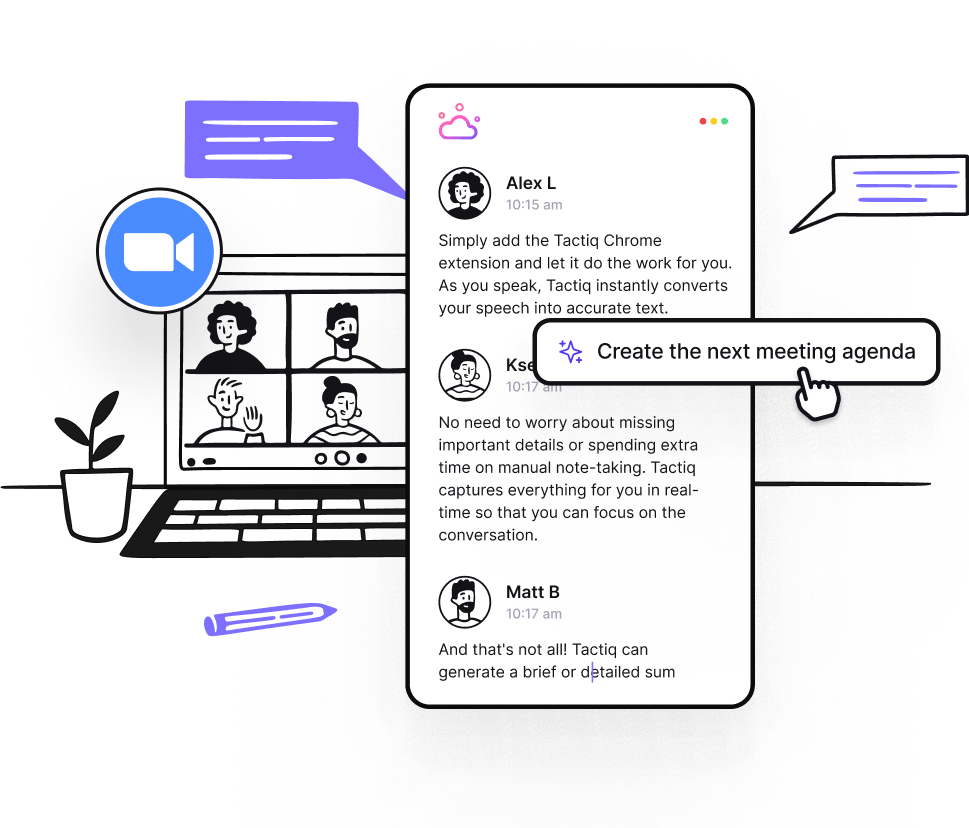How Long Does Zoom Take to Process a Recording?
August 8, 2024
August 8, 2024
June 12, 2025
June 12, 2025
Many users are curious about the time it takes to process Zoom recordings. Understanding the factors behind these delays can help manage expectations and optimize usage.
This article delves into the technical aspects of recording processing, the impact of server load, the significance of video quality, and practical tips to speed up the process. Additionally, it compares Zoom's performance with other platforms and explores alternatives to waiting for processed recordings.
For a comprehensive guide on accessing your recordings, check out where to find Zoom recordings. If you're considering other options, learn how to access Zoom cloud recordings or explore ways to download Zoom recordings.
Why Does Zoom Take Time to Process Recordings?
Technical Aspects of Processing
Processing a Zoom recording involves converting raw data into a playable video file. This includes:
- Encoding: Video and audio streams need encoding.
- Compression: Large files must be compressed to save space.
- Synchronization: Ensuring audio and video sync correctly.
- Format Conversion: Changing the file to a universal format like MP4.
Each step requires computing power, which can take time.
Impact of Server Load and Peak Times
Server load impacts how long it takes Zoom to process a recording. During peak times, such as:
- Weekdays: 9 AM to 5 PM, when most business meetings occur.
- Evening Classes: When schools and universities hold online sessions.
High demand can slow down processing. Zoom's servers prioritize tasks based on availability, causing delays during busy periods.
Importance of Video Quality and Resolution
Higher quality recordings take longer to process:
- Resolution: 1080p videos require more processing time than 720p.
- Frame Rate: Higher frame rates (e.g., 60fps) add to processing time.
- Bitrate: Better audio and video quality increase file size and processing needs.
For instance, a 1-hour meeting in 1080p may take twice as long to process compared to a 720p recording.
Role of Cloud Storage and Bandwidth
Uploading recordings to the cloud involves:
- Bandwidth: Faster internet speeds reduce upload time.
- Storage Space: Limited space can cause delays if servers need optimization.
Uploading a large file on a slow connection can significantly extend the total processing time. Cloud storage systems also balance loads across multiple servers, which can vary in speed and efficiency.
Understanding these factors helps manage expectations and troubleshoot delays in processing Zoom cloud recordings.
How Long Does it Typically Take for Zoom to Process a Recording?

Average Zoom Recording Processing Times for Different Types of Recordings
On average, Zoom takes about twice the length of the recording to process it. For example, a 1-hour meeting typically takes about 2 hours to process. However, this can vary:
- Short Meetings (under 30 minutes): Usually process faster, often within 30-45 minutes.
- Long Meetings (over 1 hour): May take 2-3 times the length of the recording, especially if recorded in high resolution.
Factors That Can Speed Up or Delay Processing
Several factors influence how long it takes Zoom to process a recording:
- Server Load: Processing times increase during peak usage periods.
- Internet Speed: Faster upload speeds can reduce the total time.
- Recording Settings: Lower resolution and frame rates speed up processing.
- Zoom Plan: Higher-tier plans may have access to more server resources, reducing wait times.
- Zoom Cloud Recordings vs. Local Recordings: A Zoom Cloud recording often take longer due to additional upload and server processing time.
Comparisons with Other Video Conferencing Platforms
How does Zoom compare to other platforms?
- Microsoft Teams: Typically processes recordings in about the same time as Zoom, but offers higher storage limits for paid plans.
- Google Meet: Processes recordings faster, often within half the recording time, but lacks some advanced features.
- Cisco Webex: Similar processing times to Zoom, but offers more robust security features.
Key Takeaway: While Zoom's processing times are in line with other platforms, factors like server load and plan type can affect speed.
User Experiences and Case Studies
Real-world examples highlight the variability in processing times:
- Case Study 1: A university professor records 2-hour lectures. On average, the recordings take 4-5 hours to process due to peak usage times and high resolution.
- Case Study 2: A small business holds daily 30-minute meetings. These recordings typically process within 45 minutes, thanks to lower server load and faster internet speeds.
- User Experience: Many users report faster processing times late at night or early morning when fewer people use the service.
Understanding these factors helps manage expectations and troubleshoot delays in processing Zoom recordings.
How to Speed Up Zoom Recording Processing?
Tips for Reducing Recording Processing Time
To speed up the processing of your Zoom recordings, consider the following tips:
- Schedule Recordings During Off-Peak Hours: Processing is faster when server load is lower. Late nights and early mornings are ideal.
- Use a Wired Internet Connection: Wired connections are more stable and generally faster than Wi-Fi, ensuring quicker uploads.
- Keep Recordings Short: If possible, split long meetings into shorter sessions. Shorter recordings process faster.
- Monitor Internet Speed: Ensure your internet speed is high enough for quick uploads. Tools like Speedtest can help you check your speed.
Best Practices for Recording Settings
Optimizing your recording settings can significantly reduce processing time. Here are some best practices:
- Lower Resolution: Choose 720p instead of 1080p. Lower resolution files are smaller and process quicker.
- Reduce Frame Rate: Set the frame rate to 15fps instead of 30fps for standard meetings. This reduces file size without compromising too much on quality.
- Disable Unnecessary Features: Turn off features like recording participant names and timestamps if not needed. This reduces the amount of data to process.
- Use Local Recording: If you don’t need immediate access to the cloud, recording locally can save upload and processing time.
Upgrading to Higher Zoom Plans

Higher-tier Zoom plans offer benefits that can reduce processing time:
- Increased Server Resources: Paid plans often come with access to more server resources, speeding up processing.
- Priority Support: Higher plans include priority customer support, which can help resolve processing delays faster.
- Advanced Features: Some plans offer features like advanced Zoom cloud recording options, which can optimize processing.
External Tools and Integrations
External tools and integrations can also help speed up the processing of your Zoom recordings:
- Tactiq: Provides real-time transcriptions during meetings, allowing immediate access to important information without waiting for Zoom processing.
- Panopto: Integrates with Zoom to manage recordings more efficiently. Panopto can process videos faster during unusually high-volume periods.
- HitPaw Screen Recorder: Offers an alternative recording method that processes recordings quickly and allows for local storage.
Other Useful Tools:
- Otter.ai: Integrates with Zoom to provide instant transcriptions and summaries.
- Dropbox: Offers faster file transfer and storage, which can help with large video recording files.
By implementing these tips and tools, you can significantly reduce the time it takes for Zoom to process your recordings, ensuring you have access to your content as quickly as possible.
What are the Alternatives to Waiting for Zoom Recording Processing?
Local Recording Options
Recording a Zoom meeting locally on your computer can be faster and more reliable than cloud recording. Here's how:
- Local Storage: Save recordings directly to your hard drive. This bypasses the need for internet upload and cloud processing.
- Immediate Access: Local recordings are available as soon as the meeting ends. No waiting for cloud processing.
- Higher Control: You have more control over the file format and storage location.
Third-Party Cloud Storage Solutions
Using third-party cloud storage solutions can help manage and access your Zoom recordings more efficiently. Consider these options:
- Google Drive: Automatically backs up Zoom recordings if connected. Google Drive offers fast upload speeds and easy sharing.
- Dropbox: Integrates with Zoom to save recordings directly. Dropbox provides quick access and robust file management features.
- OneDrive: Microsoft's cloud storage solution can store Zoom recordings. OneDrive ensures smooth integration with other Microsoft tools.
{{rt_cta_ai-convenience}}
Enhancing Zoom Meetings with Tactiq

Tactiq is an advanced tool designed to enhance your Zoom meeting with live transcriptions, AI-generated summaries, and customizable prompts. Here's how Tactiq can improve your experience:
- Instant Transcriptions and AI Summaries: Tactiq provides real-time transcriptions and generates AI summaries during meetings, ensuring you capture key points without manual note-taking. This also eliminates waiting times, allowing immediate review and sharing of content.
- AI Meeting Kits and Prompts: It offers AI meeting kits and customizable prompts to streamline follow-up tasks, such as writing Jira tickets or emails, making your workflow more efficient.
- Post-Meeting Follow-Up: Tactiq’s AI-powered assistant creates detailed summaries and follow-up emails, reducing the time and effort needed for post-meeting tasks.
- Seamless Integration: Tactiq integrates with Zoom and other productivity tools, automating follow-up activities with reusable one-click actions, ensuring you maximize your meeting productivity.
With Tactiq, you can transform your Zoom meetings into productive sessions and bypass the delays of Zoom’s recording processing.
On average, Zoom takes about twice the length of the recording to process it. For example, a 1-hour meeting typically takes about 2 hours to process. However, this can vary: Short Meetings (under 30 minutes): Usually process faster, often within 30-45 minutes. Long Meetings (over 1 hour): May take 2-3 times the length of the recording, especially if recorded in high resolution.
Several factors influence how long it takes Zoom to process a recording: Server Load: Processing times increase during peak usage periods. Internet Speed: Faster upload speeds can reduce the total time. Recording Settings: Lower resolution and frame rates speed up processing. Zoom Plan: Higher-tier plans may have access to more server resources, reducing wait times. Zoom Cloud Recordings vs. Local Recordings: A Zoom Cloud recording often take longer due to additional upload and server processing time.
To speed up the processing of your Zoom recordings, consider the following tips: Schedule Recordings During Off-Peak Hours: Processing is faster when server load is lower. Late nights and early mornings are ideal. Use a Wired Internet Connection: Wired connections are more stable and generally faster than Wi-Fi, ensuring quicker uploads. Keep Recordings Short: If possible, split long meetings into shorter sessions. Shorter recordings process faster. Monitor Internet Speed: Ensure your internet speed is high enough for quick uploads. Tools like Speedtest can help you check your speed.
Optimizing your recording settings can significantly reduce processing time. Here are some best practices: Lower Resolution: Choose 720p instead of 1080p. Lower resolution files are smaller and process quicker. Reduce Frame Rate: Set the frame rate to 15fps instead of 30fps for standard meetings. This reduces file size without compromising too much on quality. Disable Unnecessary Features: Turn off features like recording participant names and timestamps if not needed. This reduces the amount of data to process. Use Local Recording: If you don’t need immediate access to the cloud, recording locally can save upload and processing time.
Higher-tier Zoom plans offer benefits that can reduce processing time: Increased Server Resources: Paid plans often come with access to more server resources, speeding up processing. Priority Support: Higher plans include priority customer support, which can help resolve processing delays faster. Advanced Features: Some plans offer features like advanced Zoom cloud recording options, which can optimize processing.
Want the convenience of AI summaries?
Try Tactiq for your upcoming meeting.
Want the convenience of AI summaries?
Try Tactiq for your upcoming meeting.
Want the convenience of AI summaries?
Try Tactiq for your upcoming meeting.









